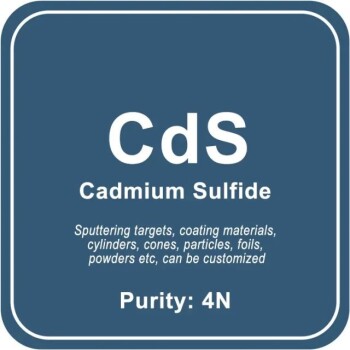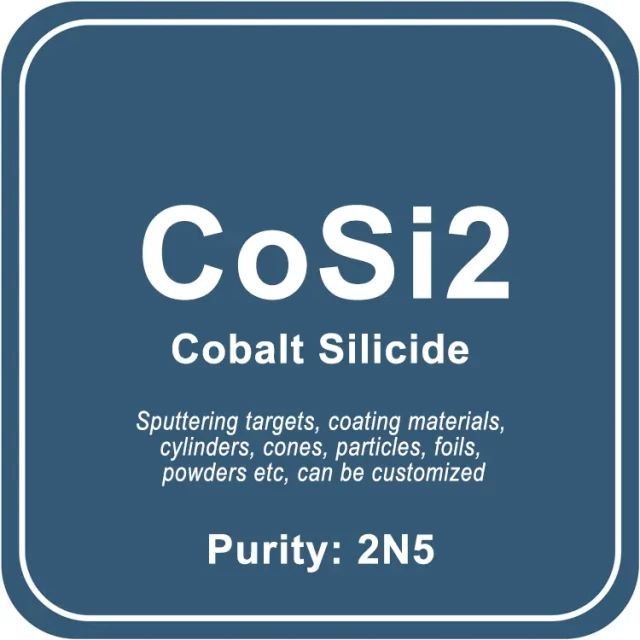
Lab Materials
Cobalt Silicide (CoSi2) Sputtering Target / Powder / Wire / Block / Granule
Item Number : LM-CoSi2
Price varies based on specs and customizations
- Chemical Formula
- CoSi2
- Purity
- 2N5
- Commonly Used Ratio
- Si:Co=1:1 at%
- Shape
- discs / wire / block / powder / plates / column targets / step target / custom-made

Shipping:
Contact us to get shipping details Enjoy On-time Dispatch Guarantee.
We offer Cobalt Silicide (CoSi2) materials at affordable prices for various research purposes. Our team's expertise lies in producing and customizing Cobalt Silicide (CoSi2) materials of different purities, shapes, and sizes to meet your specific requirements.
We provide a wide range of specifications and sizes for our products, including sputtering targets (circular, square, tubular, irregular), coating materials, cylinders, cones, particles, foils, powders, 3D printing powders, nanometer powders, wire rods, ingots, and blocks. Whether you need materials for coating, research, or any other application, we have a solution to suit your needs.
Details





About Cobalt Silicide (CoSi2)
Cobalt Silicide is generally immediately available in most volumes. High purity, submicron and nanopowder forms may be considered.
Ingredient Quality Control
- Raw material composition analysis
- Through the use of equipment such as ICP and GDMS, the content of metal impurities is detected and analyzed to ensure that it meets the purity standard;
Non-metallic impurities are detected by equipment such as carbon and sulfur analyzers, nitrogen and oxygen analyzers. - Metallographic flaw detection analysis
- The target material is inspected using flaw detection equipment to ensure that there are no defects or shrinkage holes inside the product;
Through metallographic testing, the internal grain structure of the target material is analyzed to ensure that the grains are fine and dense. - Appearance and dimension inspection
- Product dimensions are measured using micrometers and precision calipers to ensure compliance with drawings;
The surface finish and cleanliness of the product are measured using a surface cleanliness meter.
Conventional Sputtering Target Sizes
- Preparation process
- hot isostatic pressing, vacuum melting, etc.
- Sputtering target shape
- plane sputtering target, multi-arc sputtering target, step sputtering target, special-shaped sputtering target
- Round sputtering target size
- Diameter: 25.4mm / 50mm / 50.8mm / 60mm / 76.2mm / 80mm / 100mm / 101.6mm / 152.4mm
Thickness: 3mm / 4mm / 5mm / 6mm / 6.35mm
Size can be customized. - Square sputtering target size
- 50×50×3mm / 100×100×4mm / 300×300×5mm, size can be customized
Available Metal Forms
Metal Forms Details
We manufacture almost all the metals listed on the periodic table in a wide range of forms and purities, as well as standard sizes and dimensions. We can also produce custom-made products to meet specific customer requirements, such as size, shape, surface area, composition, and more. The following list provides a sample of the forms we offer, but it is not exhaustive. If you need laboratory consumables, please contact us directly to request a quote.
- Flat/Planar Forms: Board, Film, Foil, Microfoil, Microleaf, Paper, Plate, Ribbon, Sheet, Strip, Tape, Wafer
- Preformed Shapes: Anodes, Balls, Bands, Bars, Boats, Bolts, Briquettes, Cathodes, Circles, Coils, Crucibles, Crystals, Cubes, Cups, Cylinders, Discs, Electrodes, Fibers, Filaments, Flanges, Grids, Lenses, Mandrels, Nuts, Parts, Prisms, Pucks, Rings, Rods, Shapes, Shields, Sleeves, Springs, Squares, Sputtering Targets, Sticks, Tubes, Washers, Windows, Wires
- Microsizes: Beads, Bits, Capsules, Chips, Coins, Dust, Flakes, Grains, Granules, Micropowder, Needles, Particles, Pebbles, Pellets, Pins, Pills, Powder, Shavings, Shot, Slugs, Spheres, Tablets
- Macrosizes: Billets, Chunks, Cuttings, Fragments, Ingots, Lumps, Nuggets, Pieces, Punchings, Rocks, Scraps, Segments, Turnings
- Porous and Semi-Porous: Fabric, Foam, Gauze, Honeycomb, Mesh, Sponge, Wool
- Nanoscale: Nanoparticles, Nanopowders, Nanofoils, Nanotubes, Nanorods, Nanoprisms
- Others: Concentrate, Ink, Paste, Precipitate, Residue, Samples, Specimens
KinTek specializes in the manufacturing of high-purity and ultra-high-purity materials with a purity range of 99.999% (5N), 99.9999% (6N), 99.99995% (6N5), and in some cases, up to 99.99999% (7N). Our materials are available in specific grades, including UP/UHP, semiconductor, electronic, deposition, fiber optic, and MBE grades. Our high-purity metals, oxides, and compounds are specifically crafted to meet the rigorous demands of high-technology applications and are ideal for use as dopants and precursor materials for thin film deposition, crystal growth of semiconductors, and synthesis of nanomaterials. These materials find use in advanced microelectronics, solar cells, fuel cells, optical materials, and other cutting-edge applications.
Packaging
We use vacuum packaging for our high-purity materials, and each material has specific packaging tailored to its unique characteristics. For instance, our Hf sputter target is externally tagged and labeled to facilitate efficient identification and quality control. We take great care to prevent any damage that could occur during storage or transportation.
4.9
out of
5
KINTEK SOLUTION's Cobalt Silicide materials have been a game-changer for our research. The quality and purity are exceptional, and the customization options are unmatched.
4.7
out of
5
I've been using KINTEK SOLUTION's Cobalt Silicide sputtering targets for years, and they consistently deliver top-notch performance. Highly recommended!
4.8
out of
5
The Cobalt Silicide powders from KINTEK SOLUTION are incredibly versatile and have enabled us to explore new avenues in our research. Kudos to the team!
4.9
out of
5
KINTEK SOLUTION's Cobalt Silicide materials have exceeded our expectations. Their commitment to quality and innovation is truly remarkable.
4.6
out of
5
I've been thoroughly impressed with the durability and consistency of KINTEK SOLUTION's Cobalt Silicide materials. They're a reliable partner for our research needs.
4.7
out of
5
KINTEK SOLUTION's Cobalt Silicide sputtering targets have significantly improved the efficiency of our thin-film deposition process. Highly satisfied!
4.8
out of
5
The purity and uniformity of KINTEK SOLUTION's Cobalt Silicide materials have enabled us to achieve exceptional results in our research. Highly recommended!
4.9
out of
5
KINTEK SOLUTION's Cobalt Silicide materials are a testament to their commitment to quality and innovation. We're grateful for their partnership.
4.7
out of
5
The customization options offered by KINTEK SOLUTION for their Cobalt Silicide materials have been invaluable for our research. Truly a customer-centric company.
4.8
out of
5
KINTEK SOLUTION's Cobalt Silicide materials have enabled us to push the boundaries of our research. Their products are a testament to their expertise.
4.9
out of
5
The speed of delivery and responsiveness of KINTEK SOLUTION's customer service team is exceptional. They go above and beyond to ensure customer satisfaction.
4.6
out of
5
The value for money that KINTEK SOLUTION's Cobalt Silicide materials offer is unbeatable. They provide high-quality products at competitive prices.
4.7
out of
5
KINTEK SOLUTION's Cobalt Silicide materials are a perfect blend of quality, durability, and affordability. Highly recommended for researchers and industries alike.
REQUEST A QUOTE
Our professional team will reply to you within one business day. Please feel free to contact us!
Related Products
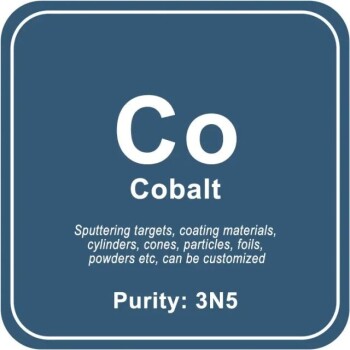
High Purity Cobalt (Co) Sputtering Target / Powder / Wire / Block / Granule
Get affordable Cobalt (Co) materials for laboratory use, tailored to your unique needs. Our range includes sputtering targets, powders, foils, and more. Contact us today for customized solutions!
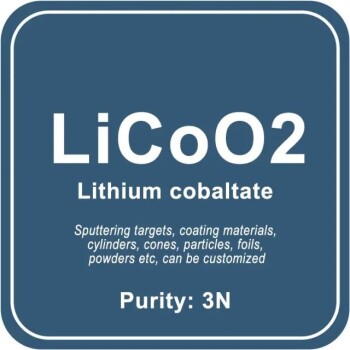
Lithium cobaltate (LiCoO2) Sputtering Target / Powder / Wire / Block / Granule
Find high-quality Lithium cobaltate (LiCoO2) materials tailored to your needs at reasonable prices. Discover our range of sizes and specifications for sputtering targets, coatings, powders, and more.

Cobalt Telluride (CoTe) Sputtering Target / Powder / Wire / Block / Granule
Get high-quality Cobalt Telluride materials for your laboratory needs at reasonable prices. We offer customized shapes, sizes, and purities, including sputtering targets, coatings, powders, and more.
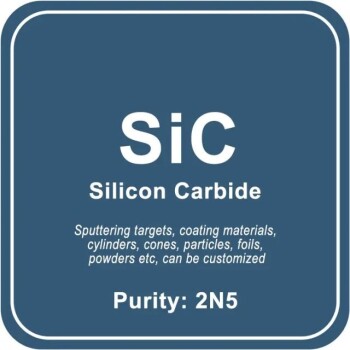
Silicon Carbide (SiC) Sputtering Target / Powder / Wire / Block / Granule
Looking for high-quality Silicon Carbide (SiC) materials for your lab? Look no further! Our expert team produces and tailors SiC materials to your exact needs at reasonable prices. Browse our range of sputtering targets, coatings, powders, and more today.
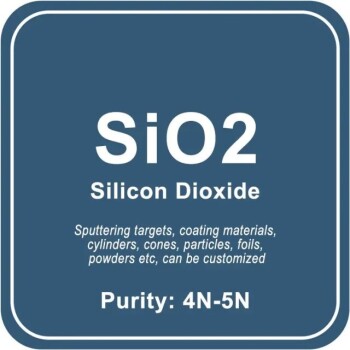
High Purity Silicon Dioxide (SiO2) Sputtering Target / Powder / Wire / Block / Granule
Looking for Silicon Dioxide materials for your lab? Our expertly tailored SiO2 materials come in various purities, shapes, and sizes. Browse our wide range of specifications today!
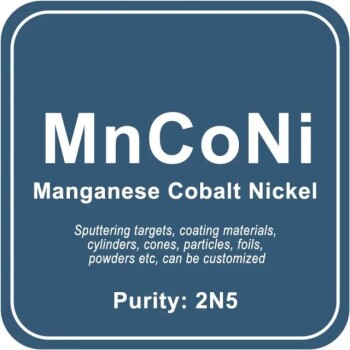
Manganese Cobalt Nickel alloy (MnCoNi) Sputtering Target / Powder / Wire / Block / Granule
Get top-quality Manganese Cobalt Nickel alloy materials for your laboratory needs at affordable prices. Our customized products come in various sizes and shapes, including sputtering targets, coating materials, powders, and more.
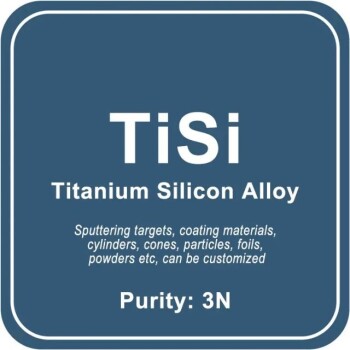
Titanium Silicon Alloy (TiSi) Sputtering Target / Powder / Wire / Block / Granule
Discover our affordable Titanium Silicon Alloy (TiSi) materials for laboratory use. Our custom production offers various purities, shapes, and sizes for sputtering targets, coatings, powders, and more. Find the perfect match for your unique needs.

Tungsten Sulfide (WS2) Sputtering Target / Powder / Wire / Block / Granule
Looking for Tungsten Sulfide (WS2) materials for your lab? We offer a range of customizable options at great prices, including sputtering targets, coating materials, powders, and more. Order now!
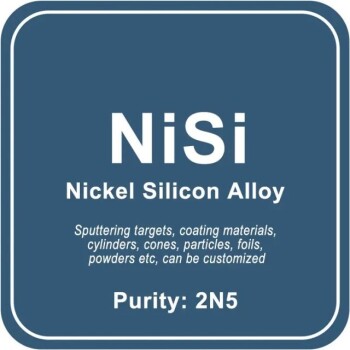
Nickel Silicon Alloy (NiSi) Sputtering Target / Powder / Wire / Block / Granule
Looking for Nickel Silicon Alloy materials for your lab? Our expertly produced and tailored materials come in various shapes and sizes to suit your unique needs. Get sputtering targets, coating materials, powders, and more at reasonable prices.
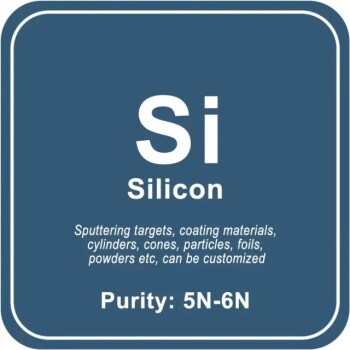
High Purity Silicon (Si) Sputtering Target / Powder / Wire / Block / Granule
Looking for high-quality Silicon (Si) materials for your laboratory? Look no further! Our custom-produced Silicon (Si) materials come in various purities, shapes, and sizes to suit your unique requirements. Browse our selection of sputtering targets, powders, foils, and more. Order now!

Zinc Sulfide (ZnS) Sputtering Target / Powder / Wire / Block / Granule
Get affordable Zinc Sulfide (ZnS) materials for your laboratory needs. We produce and customize ZnS materials of varying purities, shapes, and sizes. Choose from a wide range of sputtering targets, coating materials, powders, and more.
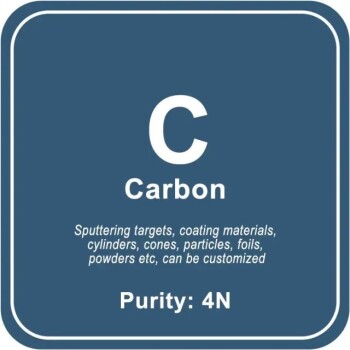
High Purity Carbon (C) Sputtering Target / Powder / Wire / Block / Granule
Looking for affordable Carbon (C) materials for your laboratory needs? Look no further! Our expertly produced and tailored materials come in a variety of shapes, sizes, and purities. Choose from sputtering targets, coating materials, powders, and more.

Silicon Nitride (Si3N4) Sputtering Target / Powder / Wire / Block / Granule
Get affordable Silicon Nitride (Si3N4) materials for your lab needs. We produce and customize various shapes, sizes, and purities to fit your requirements. Browse our range of sputtering targets, powders, and more.
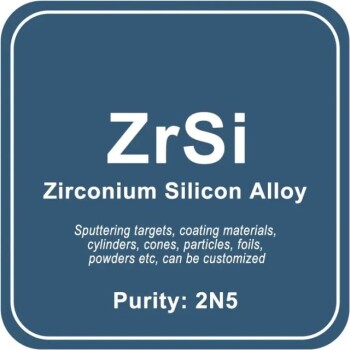
Zirconium Silicon Alloy (ZrSi) Sputtering Target / Powder / Wire / Block / Granule
Discover our Zirconium Silicon Alloy (ZrSi) materials for laboratory use at affordable prices. We produce tailored materials to fit your unique requirements, offering a wide range of specifications and sizes for sputtering targets, coating materials, powders, and more.

High Purity Chromium Oxide (Cr2O3) Sputtering Target / Powder / Wire / Block / Granule
Looking for high-quality Chromium Oxide materials for your lab? Our range includes sputtering targets, powders, foils, and more, customized to your needs. Shop now for reasonable prices.
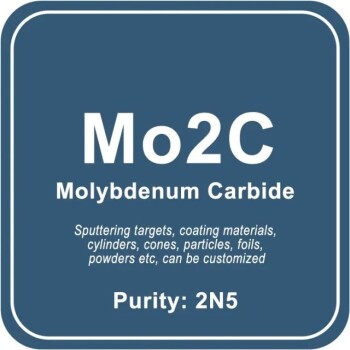
Molybdenum Carbide (Mo2C) Sputtering Target / Powder / Wire / Block / Granule
Looking for high-quality Molybdenum Carbide (Mo2C) materials for your lab? Look no further! Our expertly-produced materials come in a range of purities, shapes, and sizes to meet your unique needs. Shop sputtering targets, coatings, powders, and more today.
Related Articles

Carbon Coating for Surface Modification of Silicon-Based Materials in Lithium-Ion Batteries
This article discusses the application of carbon coatings to improve the performance of silicon-based anode materials in lithium-ion batteries.

Comparison of Planar and Rotating Silicon Targets in Thin Film Deposition
An in-depth comparison of the advantages and disadvantages of planar and rotating silicon targets, focusing on their characteristics and application scenarios in thin film deposition technology.
